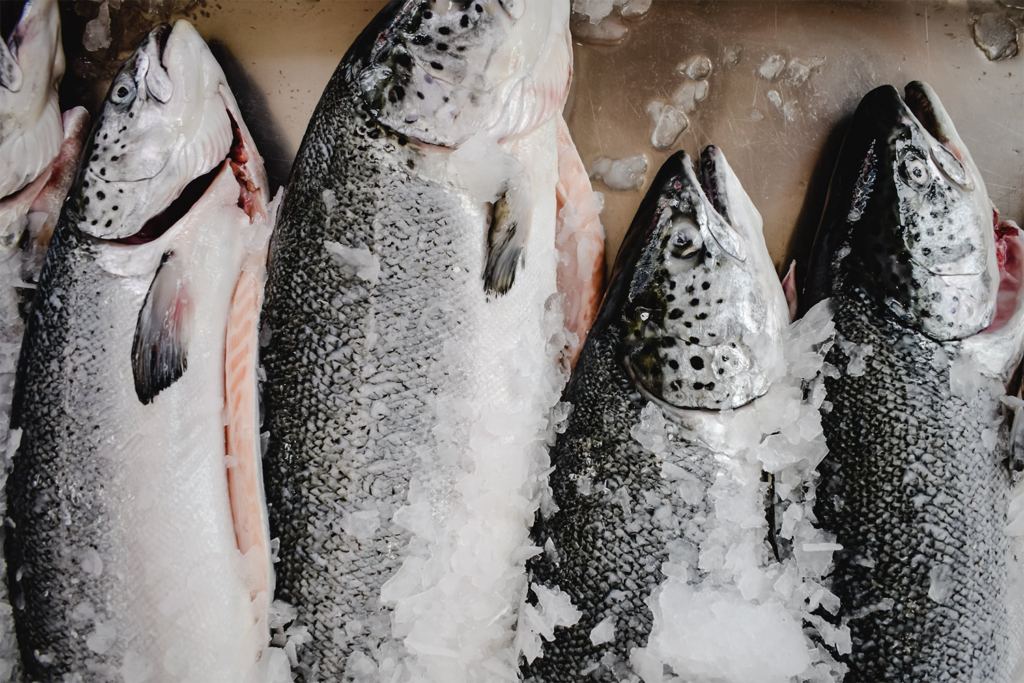Global aquaculture to grow in 2025, led by finfish production, but trade and market risks remain a concern, says Rabobank report

After a challenging 2024 marked by weak consumer demand in key markets, the global aquaculture industry is poised for stronger production growth in 2025, according to a new report from Rabobank in partnership with the Global Seafood Alliance (GSA).
Finfish production is projected to see the most robust expansion, while shrimp, which continues to face relatively low prices, is forecast to grow by just 2 percent year-over-year. Freshwater species such as pangasius and tilapia are predicted to lead the charge, with year-over-year growth of 7 percent and 5 percent, respectively.
Species with a strong European presence – including Atlantic salmon, sea bass and sea bream – are expected to see supply growth of 3 to 4 percent. Shrimp, while improving from 1 percent growth in 2024, remains sluggish compared to historical growth rates.
However, survey respondents remain concerned about the market and economic conditions in 2025, with specific concerns about market prices, aquaculture feed costs and market access. Lower feed costs and rising consumer demand are likely to bolster the sector, offering some relief to producers. But gains could be tempered by increasing tariffs and trade restrictions, which threaten to disrupt the industry’s progress.
Salmon to return to growth in 2025
“Atlantic salmon production is expected to experience mild growth from 2024 to 2026, following two consecutive years of decline,” said Novel Sharma, seafood analyst at RaboResearch. “Norway is poised to lead the growth, with year-on-year increases projected at 2.2 percent in 2025 and 5.3 percent in 2026, resulting in estimated outputs of 1.56 million and 1.64 million metric tons, respectively. This growth is contingent on stable biological conditions and improving harvest weights.”
After a difficult 2024, Chile is expected to gradually return to a growth trajectory, with a 1.4 percent year-on-year production increase expected in 2025 and 3.2 percent in 2026. However, production volumes are unlikely to surpass 2020 levels before 2026.
Shrimp production lags amid ongoing low prices
“Despite relatively low prices, we expect global shrimp production growth will remain positive,” said Sharma. After years of strong growth, shrimp production is slowing, with volumes projected to increase by only 1 percent year-on-year in 2024 and 2 percent in 2025.
Shrimp production in Latin America is expected to slow, with growth rates dropping to 2 percent in 2024 due to persistently low prices. However, growth is projected to rebound to 4 percent in 2025 as the oversupply issue subsides. Ecuador’s shrimp production – the world’s fastest-growing major aquaculture industry – is also forecast to experience a slow-down during this period.
In Asia, China and India are poised for modest growth in 2025, at 1.7 percent and 2 percent, respectively. Vietnam is expected to see stronger gains, with production forecast to rise by 4 percent, though the country continues to grapple with disease outbreaks and high production costs, which may limit its potential.
Pangasius and tilapia to see most production growth
Freshwater species are expected to have the highest growth among farmed species in 2025. Pangasius production is projected to increase by an impressive 7 percent year-over-year, driven by rising demand from China, with Vietnam at the forefront. Global tilapia production is expected to surpass 7 million metric tons, marking a 5 percent year-over-year increase, fueled by strong growth in China and Indonesia.
Trade uncertainty ahead
Despite the optimistic outlook, the industry remains concerned about the market and economic conditions heading in 2025. Ongoing geopolitical uncertainties pose significant challenges.
“Seafood is the most-traded animal protein, with a larger trade value than all other animal proteins combined,” explained Sharma. “Donald Trump’s presidential victory in the U.S. could mean new import tariffs. This is especially significant for the seafood sector, as the U.S. is the world’s largest importer, relying on imports for over 80 percent of its seafood consumption. Moreover, the potential trade war is likely to involve China, the world’s largest seafood producer, exporter and re-processor.”
According to survey results, market prices are once again the top industry concern heading into the coming year, followed by aquafeed costs and market access.
“This is understandable, as 2024 had some of the lowest seafood prices we have seen in many years,” said Sharma. “Although demand has started to improve for many species, prices are increasing from a low point, and the improvement is tentative. Possible trade restrictions from the U.S. and the uncertain recovery of Chinese, Japanese and European import demand in 2025 are clear concerns.”
Read our coverage of past Rabobank reports.
Now that you've reached the end of the article ...
… please consider supporting GSA’s mission to advance responsible seafood practices through education, advocacy and third-party assurances. The Advocate aims to document the evolution of responsible seafood practices and share the expansive knowledge of our vast network of contributors.
By becoming a Global Seafood Alliance member, you’re ensuring that all of the pre-competitive work we do through member benefits, resources and events can continue. Individual membership costs just $50 a year.
Not a GSA member? Join us.
Author
Tagged With
Related Posts

Intelligence
Aquaculture sector enters second half of 2024 with growing demand and normalizing costs: Rabobank
Rabobank predicts improved demand and cost stabilization for aquaculture, despite market uncertainty and ongoing biological challenges.

Intelligence
‘Mixed recovery’: Rabobank forecasts modest growth for shrimp industry in 2024, but global market challenges hinder bounce-back efforts
A new Rabobank report forecasts modest growth for the shrimp industry in 2024, but ongoing global market challenges hinder a full recovery.

Intelligence
Salmon aquaculture to remain strong in 2024, but shrimp sector expected to struggle: Rabobank
Rabobank analysts predict better supply for salmon aquaculture and fishmeal in 2024, but low market prices for shrimp may become “the new normal.”

Intelligence
After a turbulent 2023, ‘signs of optimism’ ahead for global seafood production
Rabobank's annual seafood production report suggests a more optimistic production outlook for 2024 compared to 2023.



